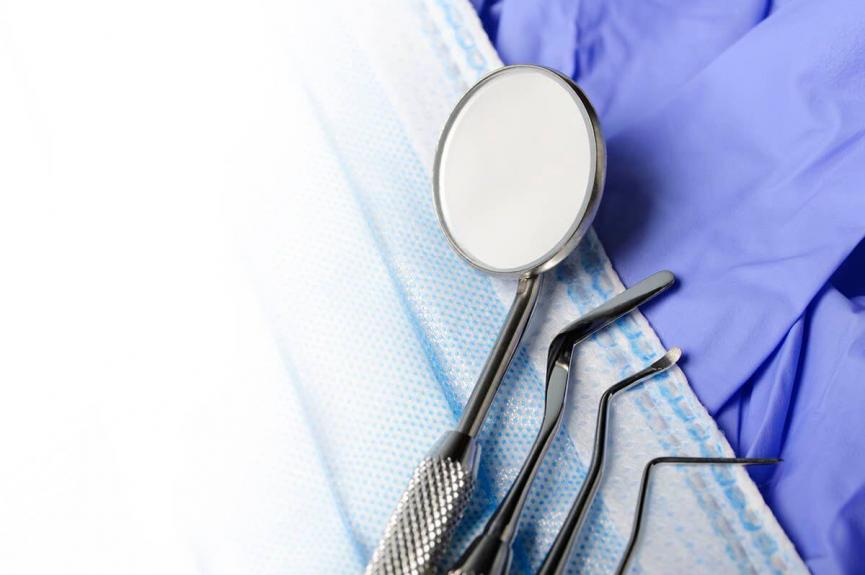
Medicine is a unique science, and it is a fact that development over the centuries has become more effective and painless, regardless of which of the sectors we specify - general medicine, specialized or dental medicine. Each part has its own specifics and from there, of course, the equipment and tools that are used to apply good and modern practices. The advent of technology has had a huge impact on the way specialists treat patients. Take dental tools for example. These are the things that are essential for the dental activity of your dentist. Without them, the dentist will not be able to perform particular treatments. A variety of extraction tools, reconstruction and other instruments are a necessity and are present in the arsenal of dental tools that are used.
In this article, we will give you a basic understanding of different dental tools and their uses. This information might be helpful whether you are joining the dental workforce, maybe you are interested in pursuing dentistry as a possible career or maybe you are a patient and just want to learn more about the field.
How many dental tools are there?
Dental instruments used by a dentist can be divided into 3 groups 1 - general tools that the dentist uses in different procedures, tooth extraction instruments and tools for teeth reconstruction.
When we visit the dental office and look around, it is impressive - there is a lot in terms of variety and in terms of a number of dental tools. The reason is the sterility and the possibility for the dental specialist to have enough means to use throughout the working day. In order to maintain a sterile environment, it is necessary for each patient to use instruments that have been sterilized. This is something that takes time and there is no way for the dentist to wait for the instrument to be cleaned to use it for the next person sitting in the chair. Therefore, if you are impressed that your dentist uses a lot in terms of quantity and type of dental instruments, you can be sure that he/she cares exclusively about your health.
What are the general tools used by a dentist?
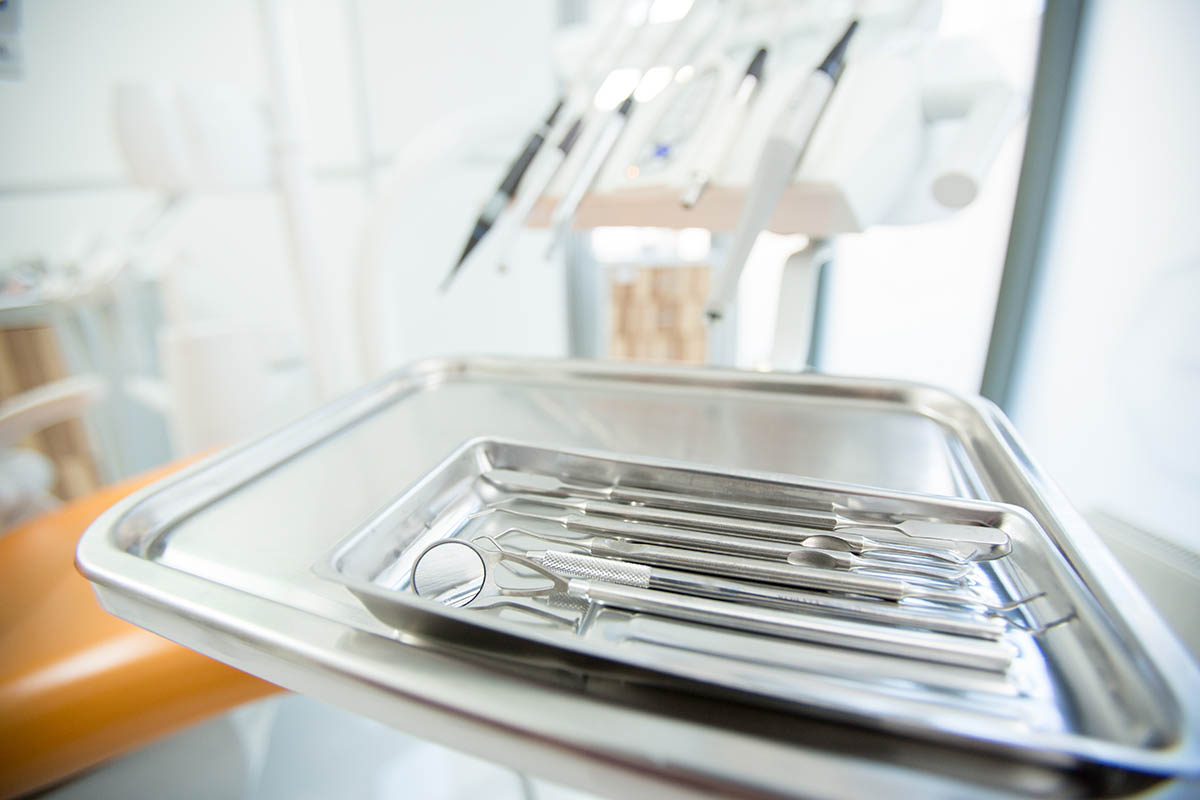
Here are the most frequently used instruments by dentists and what you may find in a typical professional dental set for routine exams. We will through each one at a time to help you get a better understanding of common dental instruments.
Mouth mirror
Dentists use mouth mirrors to look into the patient's mouth. These dental tools allow them to see the inside of the mouth from different angles, to see the teeth and gums, and detect if there are any oral issues. Some mirrors may be one-sided, while others are double.
Some places in the mouth are really difficult or even impossible to see without a dental mirror. For example, the biting surfaces of the upper teeth, the cheek surfaces of the molar teeth and others. The mirror makes this process a lot easier as the dentist is able to move the tongue out of the way. Doctors call this ability to look at oral structures using the mirror - indirect vision. You can try indirect vision yourself if you have a wall mirror and a separate hand mirror. You may also do that if you have a dental hygiene kit. It usually comes with teeth-cleaning tools, a mirror and instructions for use.
Dental probes
A dental probe is a tool used to measure the pocket depth between gum and tooth to detect the presence of gum disease. They can be also used to measure other things like the width of teeth, amount of overbite and other things like that.
A common type of probe that dentists use is a counter-probe that can help them find holes, cracks, or problems with bridges, crowns, tooth decay and other issues.
Explorer (sickle probe)
The dental explorer tool provides tactile sensitivity to detect if the edges of fillings have good integrity with the surrounding tooth structure also the margins of dental crowns, fitting well to the tooth and other purposes like that.
A historically sickle probe has been used to probe and poke to the structure to detect cavities and tooth decay but doing so too roughly can actually induce cavitation into weakened enamel. So they should be used gently if used in this way. Because of this, in recent years there have been concerns raised about this practice, calling for more research to be made on the topic 2.
Scalar
Scalars are usually two-sided instruments each with its own working end and each working end has two cutting edges that adapt closely to the tooth and remove plaque buildup from the crown or root surface. There are universal types that can be used anywhere in the mouth and then specific types that are designed for specific teeth and specific areas in the mouth.
Cotton Forceps
Dentists use Cotton Forceps to obtain and place small objects such as cotton rolls in the patient mouth. Some tweezers are able to lock.
Dental drill
This is one of the tools that sound scary and cause fear in many people. The dental drill is used in the removal of bacteria from the patient's teeth, cavities and the decayed part of the tooth before filling them. The dental drill has high rotation speed connected to cooling water. The drilling tends to be uncomfortable and painful and the sound of this instrument causes many people to fear and experience anxiety. This feeling is understandable. However, you should know that most of the dentists apply anaesthetic before using this tool. Use of this dental instrument must be very careful and precise as there have been documented unexpected hazards 3. One such hazard, as published in the Journal of Occupational Medicine and Toxicology is the fact that using a high-speed dental drill for removing amalgam can generate particulates which volatilize a substantial amount of mercury vapour lasting for more than one hour after the removal process is complete. The levels of mercury vapour is often more than the safety thresholds 4.
What dentistry instruments are used for fillings?
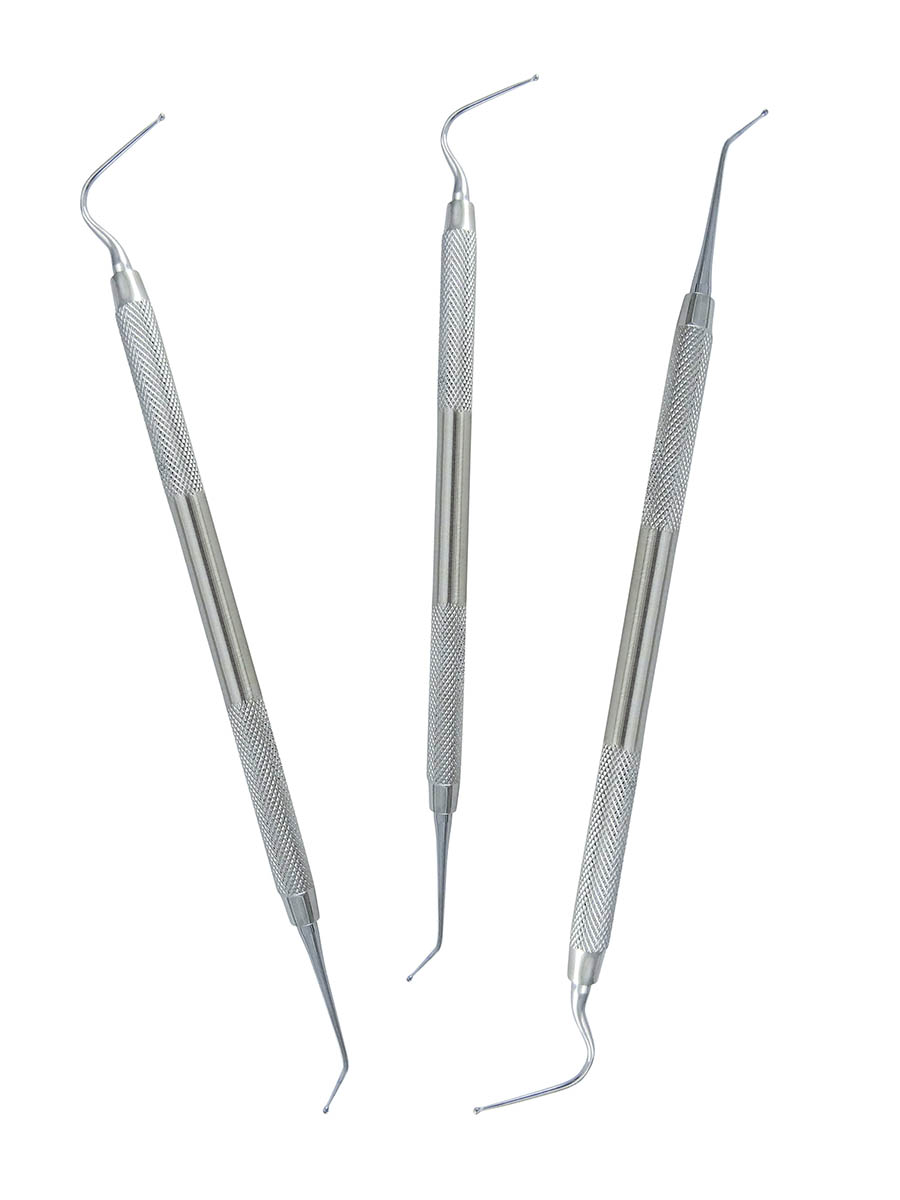
The dentist uses different tools and products like a dental drill, suction device, burnished, moulds and so on, to fill and reconstruct the teeth. Let's look at some of the dental instruments in question.
Amalgam Condenser
An amalgam condenser is used to squish amalgam material into the depths of a cavity preparation so that's properly condensed. It can also be used for condensing composite material into the base of prep in a similar fashion. According to a preliminary study of a novel dental restorative tool, Class 2 amalgam and composite restorations were done significantly faster than with traditional dental instruments 5.
Spoon excavator
A spoon excavator is used for gentle and controlled caries removal. Some operators prefer to a round bur and a slow-speed handpiece and others like to use small controlled movements with the spoon excavator to scrape caries dentin with the paddles of the spoon excavator.
Burnisher
Dental burnishes fill cavities, repair chips, smooth and polish. They are available in different sizes depending on their use. Burnishes can be used for burnishing or even carving the surface of an amalgam filling before it completely sets to give it some contour and anatomy. It can also be used in a similar way to smooth out the occlusal surface of a composite restoration before it is cured.
Spatula
A spatula is a dental instrument used to mix filling materials such as amalgam, alloy and mercury. They can be different sizes and dentists would pick the size based on what they are mixing. Larger spatulas are used to mix stone and impression materials. Smaller spatulas are used to mix things like cement, temporary filling materials
Saliva ejector/ Suction device
A saliva ejector is a suction device that is used to eliminate excess saliva and water from the patient's cavity. This prevents any kinds of problems during a dentist's work.
Dental tooth extraction tools
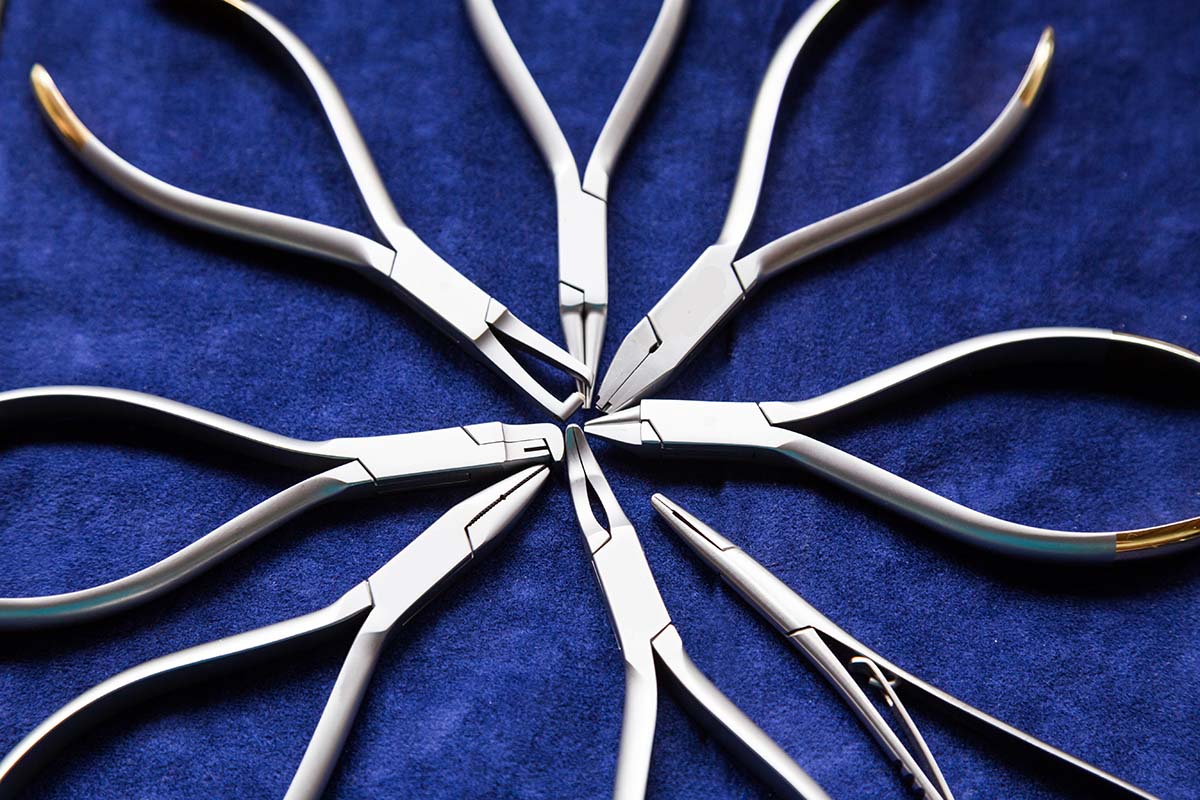
Wilson
This is an instrument that pulls back the gum tissue. The Wilson is used by the dentist when performing tooth extraction. Those tools are available in many different sizes and shapes.
Elevators
Elevators are used to separate the tooth from the bone of the gums. There are two types of these tools - small elevator and a large elevator. Dentists usually use small elevator first and then the large one.
Forceps
They are used to get the tooth out. Forceps can be different types and the dentist uses different ones depending on the location of the tooth. For example, forceps with sharper ends and long handles are good to be used for wisdom tooth extraction.
What dentistry tools are used to clean teeth?
Some of the dental cleaning tools include an ultrasonic device, tartar scraper and rotary toothbrush.
To perform dental cleaning the dentist first removes the tartar plaque and stain by using ultrasonic tooth cleaner (scaler). This instrument is similar to a regular scaler but this one has water coming out of it. The ultrasonic dental scaler uses a combination of both ultrasonic vibrations high pressurized water to remove plaque and stains. After the dentist completes all the surfaces with an ultrasonic scaler he/she goes back and cleans all surfaces with a hand tartar scarper. Finally, the dentist brushes the teeth by using a rotary toothbrush and paste polish.
Can I scrape plaque off my teeth?
You cannot remove accumulated plaque and tartar on your teeth by yourself. This is a solid structure that cannot be scraped off or removed with any products, toothbrushes or dental self-care tools. Cleaning tartar at home with sharp objects will not be successful, you will only damage your enamel and gums. Tartar can only be scraped off by a dental hygienist or dentist with professional ultrasound equipment designed for this problem.
Dentists recommend people get professional dental cleaning twice a year. It helps prevent gum disease, tooth decay and other dental issues.
What are dental instruments made of?
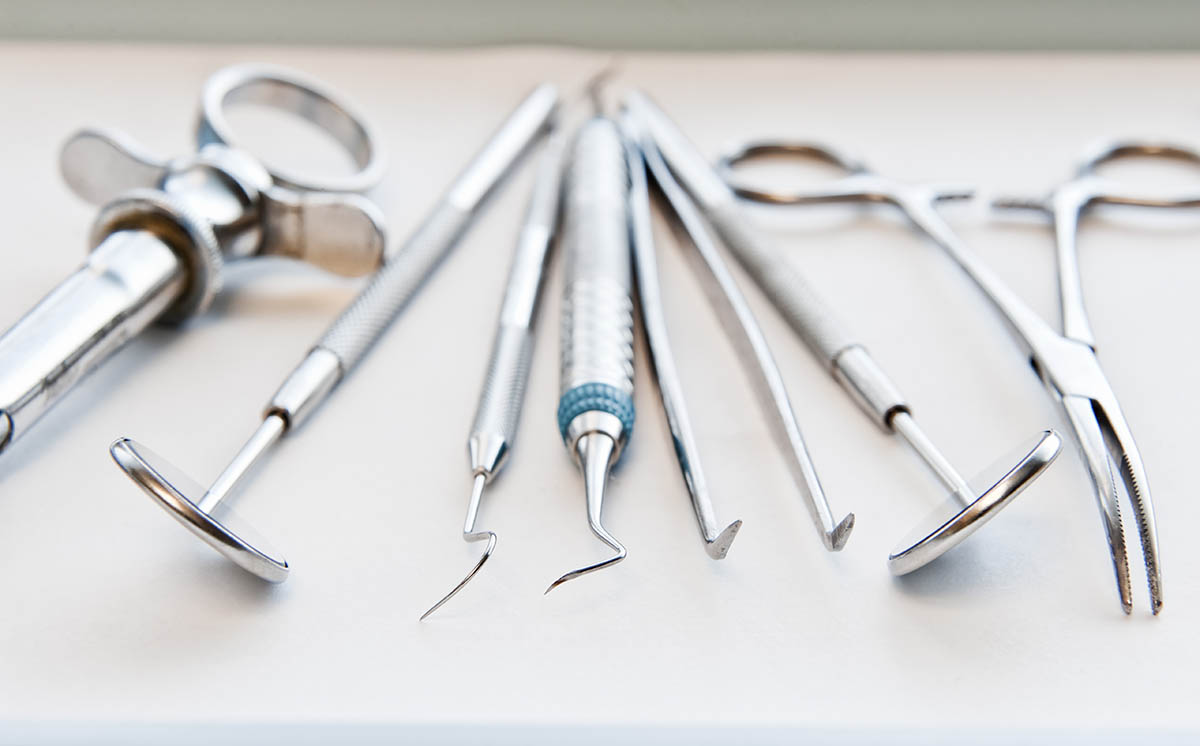
Dental tools are usually made of strong and durable materials like stainless steel or carbon steel.
Stainless steel is one of the few materials that combine several important properties - low interaction with the human body or even its complete absence (inertness), hardness, durability and relatively low cost.
For the same reasons, hospitals and clinics are provided with many different medical equipment products made entirely or partially of stainless steel - medical furniture, instruments and accessories, and so on.
Medical instruments manufactured from special stainless steels must meet certain requirements - resistance to plastic deformation, hardness and durability. They must be resistant to corrosion, to meet high hygiene requirements and not lose their properties after one or two uses.
Conclusion
Dentists usually make a pretty solid investment when it comes to dental materials and tools. However, those items can be used for a long time. In general, a skilled dentist knows how to keep the tools and products he/she uses, as they are his/her right hand. Dental tools are an important part of a dentist's work. A high-quality set of instruments help dental professionals to reach the patient's problem and to perform the appropriate professional treatment.
- 1. https://faculty.atu.edu/cbrucker/engl2053/samples/dga03.htm
- 2. https://www.sciencedirect.com/topics/medicine-and-dentistry/remineralisa...
- 3. https://www.researchgate.net/publication/312933717_Unexpected_Hazards_wi...
- 4. https://occup-med.biomedcentral.com/articles/10.1186/s12995-019-0240-2
- 5. https://www.ncbi.nlm.nih.gov/pmc/articles/PMC5666221/







